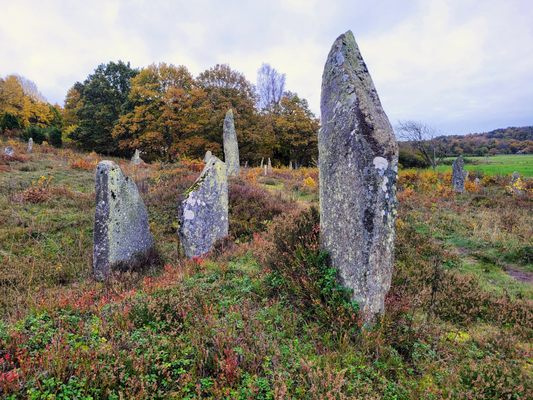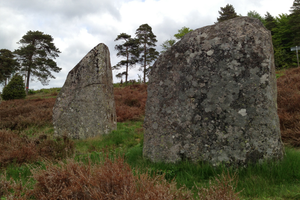About
Some of Sweden's earliest populations lived and died in the rough countryside created in the wake of retreating ice age glaciers near Lake Lygnern. The gravel ridge known as Fjaras Bracka is marked with over a hundred standing gravestones, raised in memory of the long forgotten dead.
The late Iron Age burial site known as the Li Grave Stones once contained over 200 standing stones. Over the centuries, locals pillaged the valuable building material for other projects until now a little over 100 remain. The largest among them is known as Frodestenen, or "Frode's Stone" and stands nearly 5 meters tall. Named for the legendary Danish King Frode mentioned in Snorri Sturluson's Prose Edda, the stone was originally an estimated 7 meters high, but it broke some time in the 18th century.
Called "bauta stones" in Scandinavian tradition, standing stones were also raised during the Viking era in memory of fallen warriors and great men. Although the stones clearly pre-date the Viking Era, local mythology has long associated the site with Viking battles and burials. Excavations of burials at the site have produced bits of bone, iron and bronze weapons and assorted other items dating both from the Iron and Viking Ages.
There are other bauta stones throughout Sweden, including the spectacular ship-shaped group known as Ale's Stones. Fjaras Bracka is now a nature reserve.
Related Tags
Know Before You Go
From Gothenburg, head south on the E6. Exit at Fjäras, take a left off the offramp, and follow signs for Fjärås Bräcka. Take a right on Tostaredsvägen Take a left onto Stenaliden, and then a slight left onto Livägen. There is parking and outdoor washrooms on the hill above the site, there are also hiking trails and a nature preserve visitor center. As of the writing of this post, the directions from Google Maps Street View were very accurate. http://goo.gl/maps/uxTES
Community Contributors
Added By
Published
June 10, 2013









































